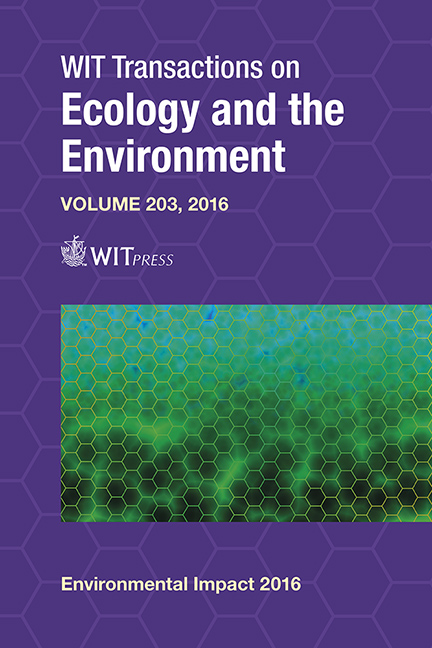Mapping Temporal And Spatial Variation Of Sulphur And Nitrogen Deposition To A Complex Ecosystem In Campeche, Mexico
Price
Free (open access)
Transaction
Volume
203
Pages
11
Page Range
113 - 123
Published
2016
Size
3,158 kb
Paper DOI
10.2495/EID160111
Copyright
WIT Press
Author(s)
J. Cerón, R. Cerón, C. Aguilar, C. Montalvo, A. García, M. Muriel, E. Ramírez, A. Córdova, C. Carballo
Abstract
Throughfall deposition was measured in a complex ecosystem at the southeast of Mexico. Samples were collected in an annual basis at Xicalango-Atasta region in Campeche State. Ionic exchange resin collectors were used in 13 points in a multiple transects design. Ions retained were extracted and analyzed by colorimetry and turbidimetry. Mean throughfall deposition fluxes for N and S were 0.97 and 9.47 Kg ha−1 yr−1. N deposition flux did not exceed the critical load proposed and was considerably lower than those values reported for other authors; however, throughfall deposition flux for S was 2 times higher than those proposed for sensitive areas in Europe, suggesting that S deposition could be a threat for the mangrove ecosystems and fisheries in the region. Long-range transport of regional pollutants was evident during all seasons. Throughfall deposition maps were obtained by geo-statistic techniques and it was possible to identify two deposition hotspots in the region: oil and gas production facilities and vehicular emissions from federal highway.
Keywords
spatial distribution, throughfall deposition, N and S deposition, Campeche, Mexico





